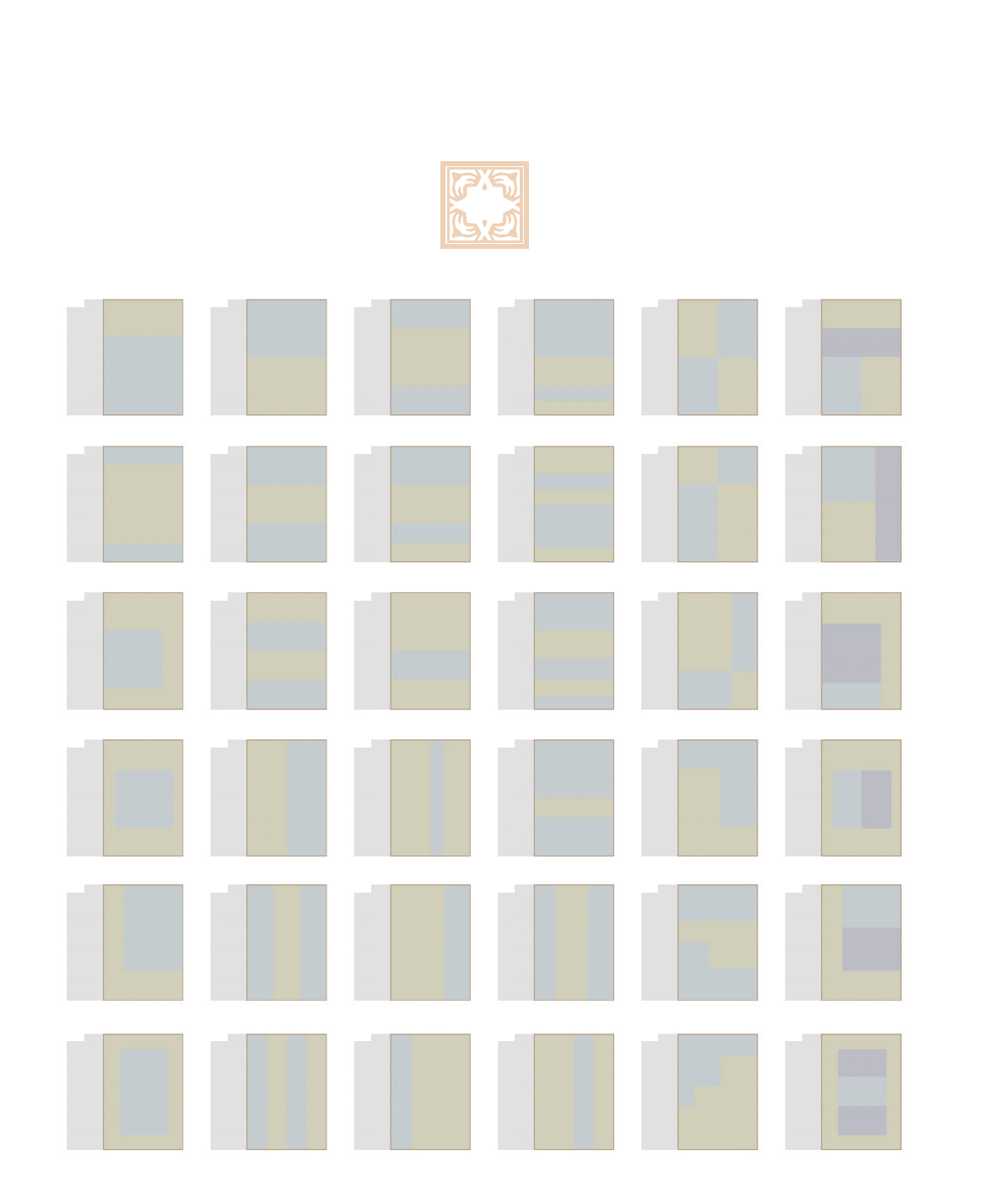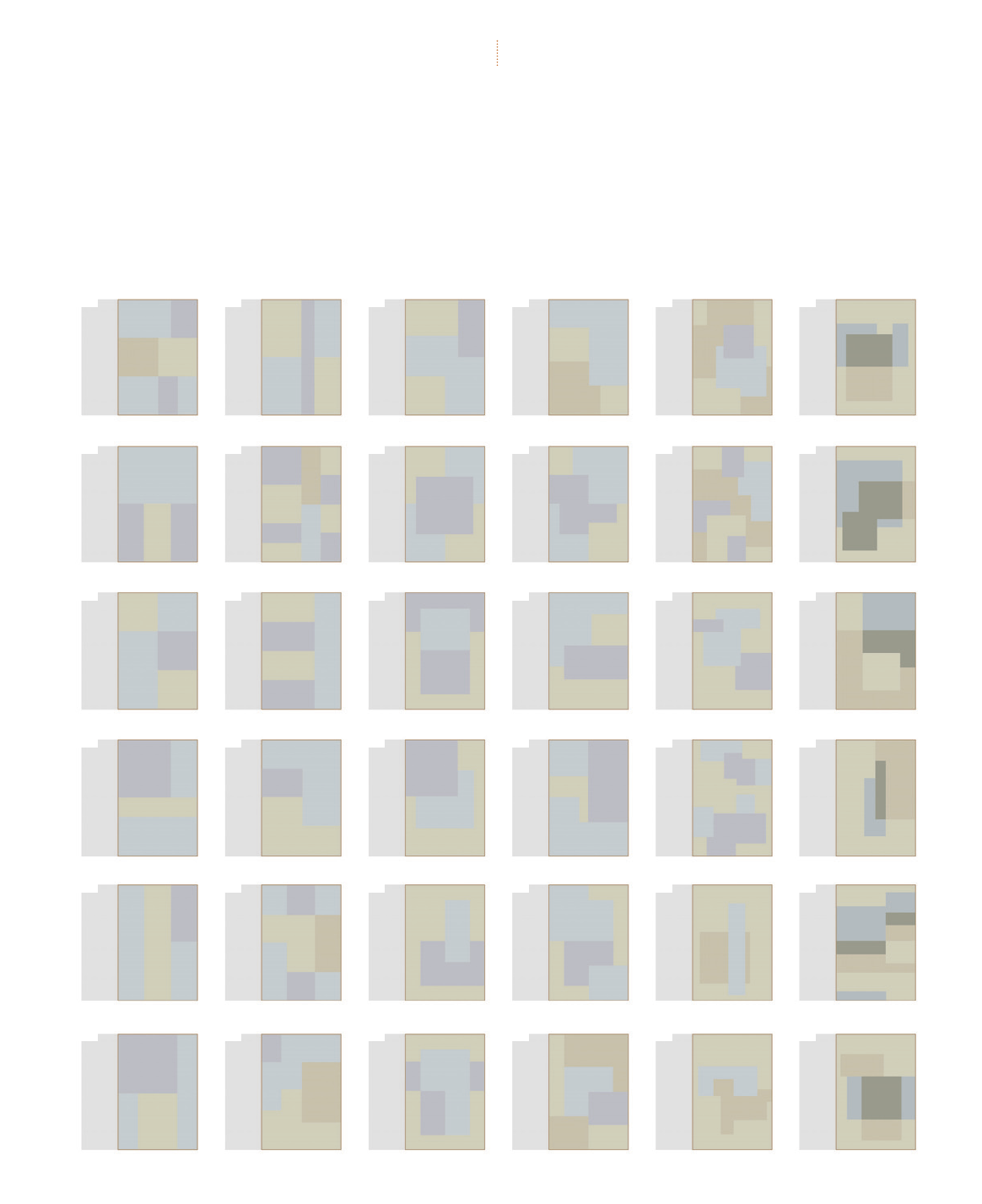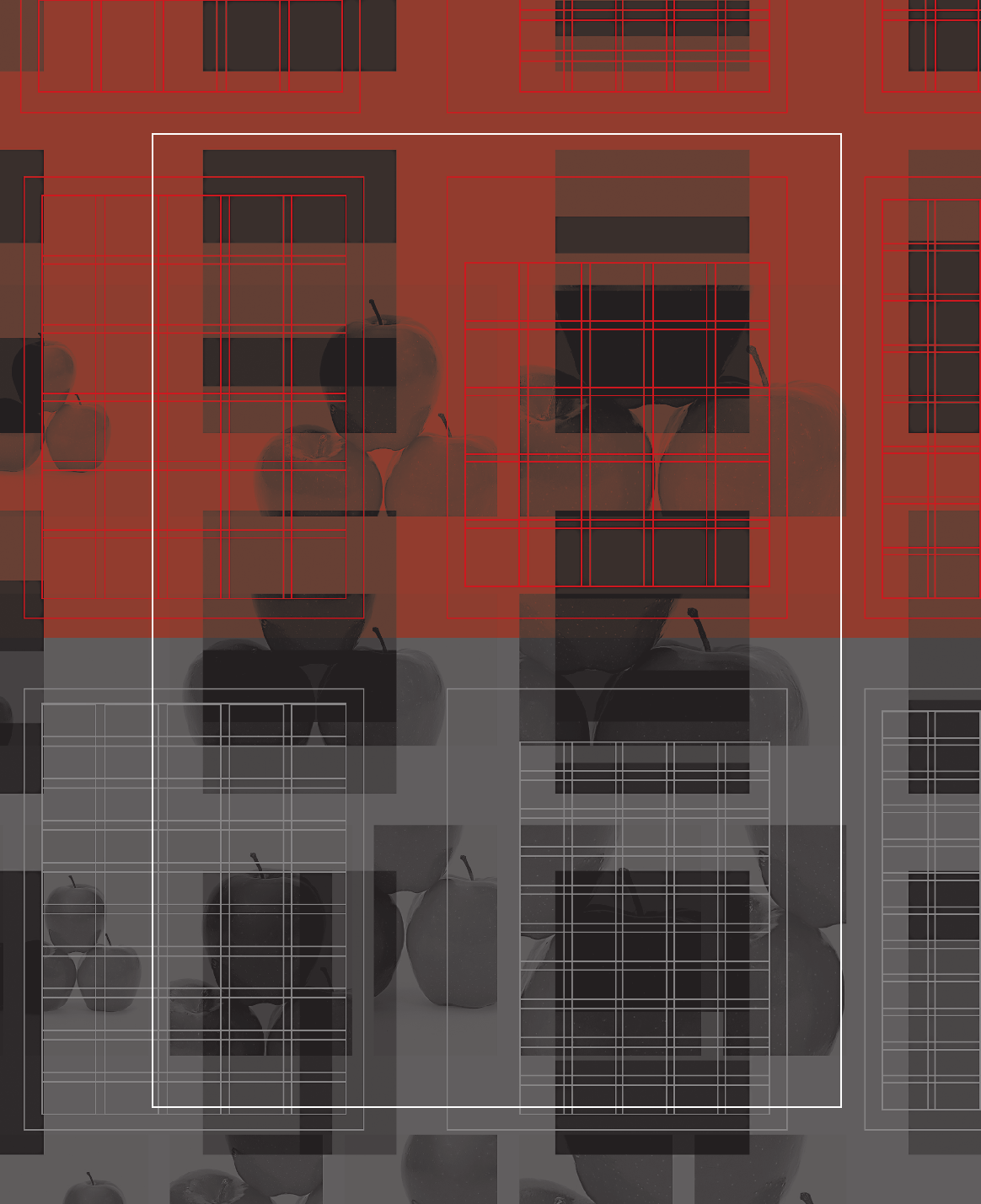
(RAY)
Job:07-26153 Title:RP-Graphic Designer’s Essential Reference PB Edn
#175 Dtp:204 Page:141
140-159_26153.indd 141 7/12/11 2:53 PM
(Text)
THE PAGE OR FORMAT is the fi eld where a designer presents
and arranges text, graphic details and imagery to make each
component shine individually even as it contributes to the work
as a unifi ed whole. The designer may consider symmetrical or
asymmetrical composition, depending on how casual or formal,
or how classical or contemporary, the project is. He or she may
opt to organize the page mathematically or architecturally, to
promote a sense of order—or in a spontaneous, organic way,
delivering a playful or energetic feeling. Because so many design
projects incorporate large amounts of type, grid structures to
integrate text and image into coherent layouts are presented
here. With regard to pictorial elements themselves, designers
will fi nd a variety of cropping strategies to refi ne and sharpen
the presentation of images, whether full-frame scenes, portraits,
or pictures of objects. Concepts for sizing and proportioning
images together to create bold and dynamic layouts round out
this section.
49 Page Divisions: Orthogonal 142
50 Page Divisions: Diagonal and Organic 144
51 Grids: Column: Regular 146
52 Grids: Column: Compound and Hierarchic 148
53 Grids: Modular 150
54 Editorial Structure: Folio/Runner Placement 152
55 Image Cropping: Scenes and Objects 154
56 Image Cropping: Figures and Faces 156
57 Image Layout: Compositional Strategies 158
141
(RAY)
Job:07-26153 Title:RP-Graphic Designer’s Essential Reference PB Edn
#175 Dtp:204 Page:141
140-159_26153.indd 141 7/12/11 2:45 PM

(RAY)
Job:07-26153 Title:RP-Graphic Designer’s Essential Reference PB Edn
#175 Dtp:204 Page:142
140-159_26153.indd 142 7/12/11 2:53 PM
(Text)
142
GRAPHIC DESIGNER’S ESSENTIAL REFERENCE
{}
PAGE DIVISIONS Orthogonal
49
490 01 49007 4901 3 49019 49025 49031
49002 49008 49014 49020 49026 49032
49003 49009 49015 49021 49027 49033
49004 49010 49016 49022 49028 49034
49005 49011 49017 49023 49029 49035
49006 49012 49018 49024 49030 49036
Single Division: Format Square Halves: Top/Bottom Quarters: Middle-Zone Half Progression: Halves/Thirds Quadrants: Symmetrical Quarters/Quadrants
Format Square: Centered Thirds: Top-to-Bottom Thirds: Lower Third Halved Alternation: Halves/Quarters Quadrants: Asymmetrical Halves/Third: Right
Square: Asymmetrical Inset Quarters: Top-to-Bottom Quarters: Top Zone Half Progression: Mixed Quadrants: Asymmetrical Square: Inset/Quarters
Square: Centered Halves: Left/Right Half: Left/Third: Right Half: Top/Third: Bottom Steps: Quarters/Half Square: Centered/Halved
Format Repeated: Reduced Thirds: Left-to-Right Two-Thirds/One-Third Quarter: Left/Third: Right Steps: Thirds/Halves Format Inset: Halved
Format Repeated: Inset Quarters: Left-to-Right One-Quarter/Three-Quarters Half: Left/Two Quarters: Right Steps: Mixed: Vertical and
Horizontal
Format Centered: Thirds
(RAY)
Job:07-26153 Title:RP-Graphic Designer’s Essential Reference PB Edn
#175 Dtp:204 Page:142
140-159_26153.indd 142 7/12/11 2:45 PM

(RAY)
Job:07-26153 Title:RP-Graphic Designer’s Essential Reference PB Edn
#175 Dtp:204 Page:143
140-159_26153.indd 143 7/12/11 2:54 PM
(Text)
143
SPATIAL PRESENTATIONS
GRAPHIC ELEMENTS
Whether using a grid or not (see Categories 51,
[page 146], 52, [page 148], and 53 [page 150]),
organizing a composition based on vertical/
horizontal geometry establishes clear propor-
tional relationships between positive elements
and negative spaces, tying all the parts of a page
or spread together for the viewer. Classical
strategies based on squares and rectangles—
the Golden Section, the Law of Thirds, and
other mathematical approaches—mingle with
contemporary ones, including those that
present overlapping fi elds for more layered
organization. Use these proportional systems
to help defi ne areas of differing content, posi-
tion elements with clear relationships among
them, or impart an architectonic quality
to layouts.
49037 49043 49049 49055 49061 49067
49038 49044 49050 49056 49062 49068
49039 49045 49051 49057 49063 49069
49040 49046 49052 49058 49064 49070
49041 49047 49053 49059 49065 49071
49042 49048 49054 49060 49066 49072
Thirds: Mixed Subdivisions Half and Right Third: Halved Overlaps: Square/Thirds Overlaps: Square/Steps Overlaps: Intuitive Proportions Overlaps: Implied Layers
Lower Half: Thirds Mixed Subdivisions Overlaps: Quadrants/Square Overlaps: Square/Steps Overlaps: Intuitive Proportions Overlaps: Implied Layers
Mixed Thirds/Half/Quadrant Two Thirds: Quartered Overlaps: Thirds/Format Half Overlaps: Steps:Mixed Overlaps: Intuitive Proportions Overlaps: Implied Layers
Mixed Square/Thirds Steps: Quarters/Halves Overlaps: Squares Overlaps: Steps:Mixed Overlaps: Intuitive Proportions Overlaps: Implied Layers
Two Thirds: Left/Last Halved Steps: Thirds/Quarters Overlaps: Selected Subdivisions Overlaps: Steps:Mixed Overlaps: Intuitive Proportions Overlaps: Implied Layers
Mixed Square/Quarters Steps: Quarters: Vertical and
Horizontal
Overlaps: Format/Quarters Overlaps: Steps:Mixed Overlaps: Intuitive Proportions Overlaps: Implied Layers
(RAY)
Job:07-26153 Title:RP-Graphic Designer’s Essential Reference PB Edn
#175 Dtp:204 Page:143
140-159_26153.indd 143 7/12/11 2:45 PM
Get Graphic Designer's Essential Reference now with the O’Reilly learning platform.
O’Reilly members experience books, live events, courses curated by job role, and more from O’Reilly and nearly 200 top publishers.


